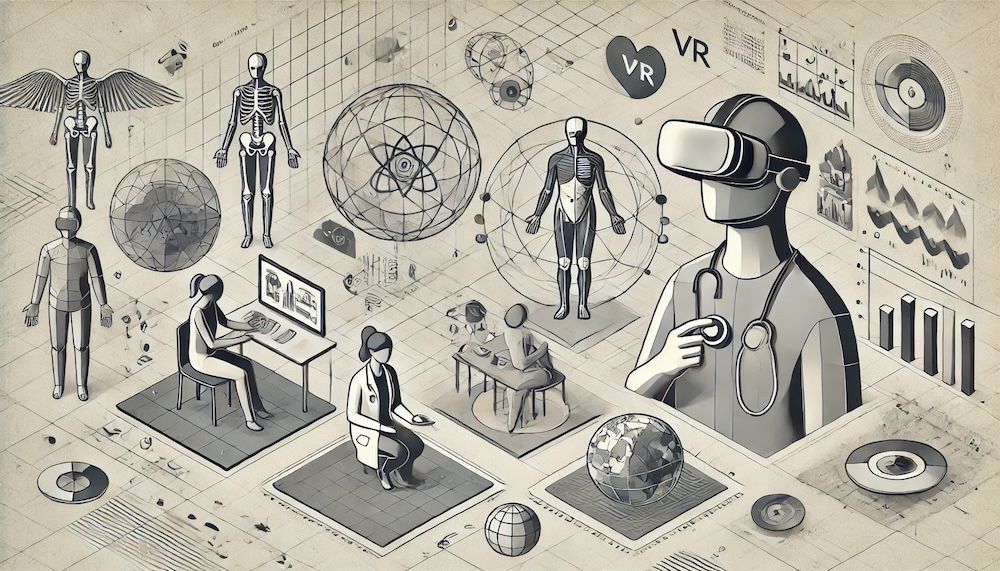
VR Content
VR content is digital content created specifically for virtual reality (VR). This content allows users to be immersed in an immersive, three-dimensional environment that can be experienced through the use of VR headsets and other related technologies. Typical VR content includes games, simulations, interactive experiences, and training applications.

This content allows users to enter an immersive, three-dimensional environment that can be experienced using VR headsets and other related technologies. Typical VR content includes games, simulations, interactive experiences, and training applications.
The Diversity of VR Content
Education and training
VR is increasingly being used in education and training. Immersive learning environments allow students to better understand complex topics and practice practical skills in a safe, controlled environment. For example, medical professionals are using VR to simulate and practice surgical procedures.
Virtual Travel and Experiences
VR content enables virtual travel and experiences that would be difficult or impossible to access in real life. Users can visit historical sites, dive underwater, or even travel to outer space from the comfort of their homes. These experiences are not only for entertainment, but also a valuable educational resource.
Gaming and Entertainment
One of the most popular applications for VR content is the gaming industry. VR games provide an immersive and realistic gaming experience that allows the player to be fully immersed in virtual worlds. From action-packed adventures to quiet, meditative experiences, the range of VR games is vast.
How VR Content is made
Concept and storyboard
It all starts with a clear idea. What experience do you want the user to have? Do you want to inform them, entertain them, or guide them to take a specific action? Based on this, a storyboard or experience flow is created, describing scenes, viewing directions, interactions and possible user paths.
3D content creation
VR content usually consists of 3D environments, objects and animations. These assets are modelled using tools such as Blender, Maya or Cinema 4D, and then optimised for real-time engines in terms of the number of polygons, textures and lighting.
Realistic environments are created using techniques such as photogrammetry or LiDAR scanning to recreate real locations in 3D.
Engine integration
The finished 3D models are then imported into a real-time engine, such as Unity or Unreal Engine. There, interactions, animations, navigation and logic (e.g. triggers and UI elements) are defined. This phase transforms static 3D content into an interactive experience.
Audio and interactivity
Spatial audio is crucial for immersion. Sounds are positioned so that they feel realistic, depending on the viewing direction and location. At the same time, the way in which users interact with the environment is defined (e.g. via controllers, hand tracking or eye tracking).
Testing and optimisation
VR requires high performance (usually 72–120 fps) to avoid motion sickness. This is why it is tested on different headsets, with performance optimised through techniques such as level of detail, light baking and culling. User guidance is also checked to ensure that orientation and interaction are intuitive.
Distribution
Depending on the target audience, finished VR experiences are published on platforms such as SteamVR, the Meta Quest Store and the Pico Store, or as WebVR/WebXR applications. For industrial applications, distribution is often via closed systems or intranets.
The future of VR content
The development of VR content is still in its infancy, but the possibilities are almost endless. As technology advances, content will become more realistic and interactive. Artificial intelligence and machine learning could make future VR experiences even more personalized and dynamic.
Facts and Features
- Immersive experiences: VR content allows users to be fully immersed in three-dimensional virtual worlds, creating a strong sense of presence.
- User Interaction: VR content often requires active interaction, whether through movement, gestures, or voice commands, resulting in a more immersive user experience.
- Increased learning motivation: Studies have shown that VR-based learning can increase learner motivation and engagement because it is hands-on and interactive.
- Accessibility: VR content allows people to access experiences and places that are difficult to access in real life due to physical, geographic, or financial limitations.
- Hardware requirements: VR content requires specialized equipment such as VR headsets (e.g., Oculus Rift, HTC Vive) and powerful computers or consoles.
- Content creation: VR content creation requires specialized software and technical skills, including 3D modeling, animation, and programming.
- Market growth: The market for VR content is growing steadily, driven by technological advances and increasing demand for immersive digital experiences.
- Personalization: With the help of AI and machine learning, VR content can be increasingly personalized to meet users' individual preferences and needs.
